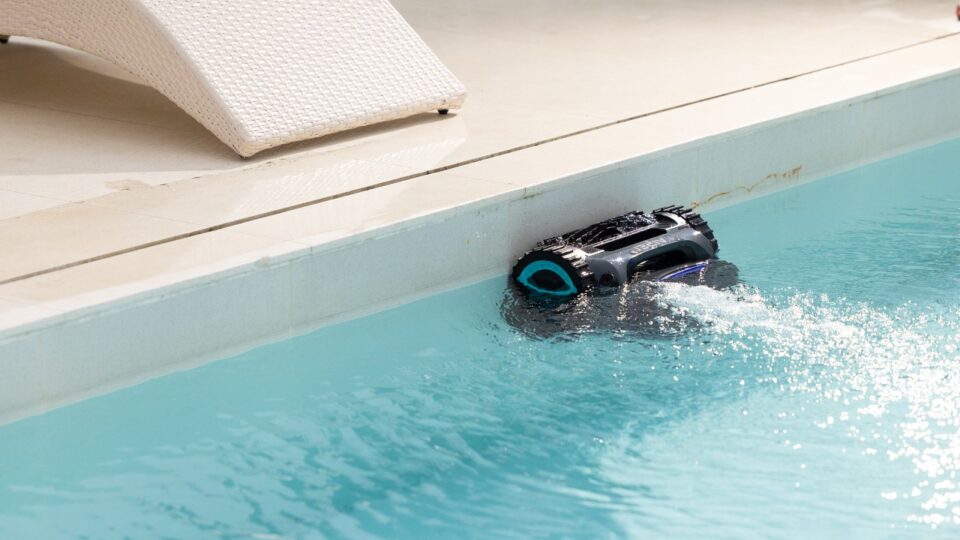Maintaining a clean swimming pool isn’t just about sparkling water — it’s also about the condition of the pool walls. Over time, grime, algae, calcium deposits, and other residues can cling to your pool’s interior surfaces, making them unsightly and even hazardous. Whether you have a vinyl, fiberglass, or concrete pool, knowing how to clean dirty pool walls properly is essential for both aesthetics and hygiene.
In this blog, we’ll break down the tools, techniques, and preventative measures needed to restore your pool walls to pristine condition.
Why Do Pool Walls Get Dirty?
Before diving into the cleaning process, it’s helpful to understand why pool walls get dirty in the first place. Here are some of the most common causes:
- Algae growth: Warm, still water encourages algae, which cling to walls and create a slimy green or yellow film.
- Calcium buildup: Hard water leads to calcium deposits, which appear as white, crusty spots on pool walls.
- Debris and oil: Leaves, dirt, sunscreen, and body oils can cling to walls over time, especially near the waterline.
- Poor water circulation: Inadequate filtration allows particles and contaminants to settle on surfaces.
Essential Tools for Cleaning Pool Walls
To clean dirty pool walls effectively, gather the following tools:
- Pool brush: Choose a brush suitable for your pool type (nylon for vinyl, stainless steel for concrete).
- Telescopic pole: Allows you to reach all areas of the pool without getting in.
- Vacuum system: Manual or automatic pool cleaner helps remove dislodged debris.
- Water testing kit: Ensures pH, chlorine, and calcium levels are balanced to prevent future buildup.
- Non-abrasive scrub pads or sponges: Useful for detailed cleaning of stains and scale.
- Protective gloves and goggles: Always wear safety gear when handling pool chemicals.
Step-by-Step: How to Clean Dirty Pool Walls
1. Balance Your Pool Water
Before cleaning, test and adjust your pool water chemistry. Ideal parameters include:
- pH: 7.2–7.6
- Chlorine: 1–3 ppm
- Calcium hardness: 200–400 ppm
Balancing your pool prevents scaling and supports the effectiveness of sanitizers.
2. Brush the Pool Walls Thoroughly
Using the appropriate pool brush, scrub the entire surface of the pool walls. Pay special attention to:
- The waterline (where buildup is most common)
- Steps and corners (where algae hide)
- Deep end walls (often overlooked)
Use consistent, overlapping strokes to loosen grime and debris. Do this at least once a week as part of regular maintenance.
3. Use a Manual or Automatic Vacuum
Once the debris has been dislodged, vacuum the pool floor to prevent it from resettling. If you’re using an automatic cleaner, this is where a best pool cleaner can make a difference — saving time and improving coverage.
Manual vacuums require more effort but give you direct control. Use slow, deliberate movements to remove sediment effectively.
4. Spot Treat Stains and Deposits
For stubborn stains or calcium buildup:
- Apply a pool-safe stain remover or diluted vinegar to the spot.
- Use a non-abrasive scrubber to work the solution into the wall.
- Rinse well and repeat if necessary.
Never use harsh or household cleaners, as they can damage the pool surface and affect water chemistry.
5. Shock the Pool (if necessary)
If algae were present, shocking the pool helps eliminate any remaining spores. Add the appropriate amount of pool shock based on volume and contamination level, then run the filter for 24–48 hours.
Pro Tips for Keeping Pool Walls Clean Longer
- Regular Brushing: Even if your pool looks clean, brushing the walls once a week prevents buildup. Don’t wait until you see grime to take action.
- Monitor Chemical Levels: Maintaining balanced water chemistry is your first line of defense against algae and scaling.
- Install a Pool Cover: A cover keeps debris out of the water, reducing the contaminants that can settle on your walls.
- Improve Circulation: Check that your pump and filter are running long enough each day (typically 8–12 hours) and that jets are angled to distribute water evenly throughout the pool.
- Schedule Routine Maintenance: Set a calendar reminder for monthly deep cleans and quarterly professional checkups.
When to Consider Professional Help
If your pool walls are stained beyond home remedies or you’re dealing with recurring algae, it may be time to call in the pros. A professional pool cleaning service has access to commercial-grade equipment and chemicals to restore even the most neglected pools.
Additionally, hiring a technician can help identify underlying issues such as poor filtration, cracked surfaces, or hidden leaks — all of which can contribute to dirty pool walls.
Final Thoughts
Clean pool walls are not only visually pleasing but also essential for swimmer safety and water quality. With the right tools, routine brushing, and good chemical management, keeping your pool walls spotless becomes a manageable part of your pool care routine.
And remember, investing in the best pool cleaner can significantly reduce the time and effort needed to maintain your pool — freeing you up to enjoy more time in the water and less time cleaning it.
By staying consistent and proactive, you’ll extend the life of your pool and ensure every swim is a clean one.

